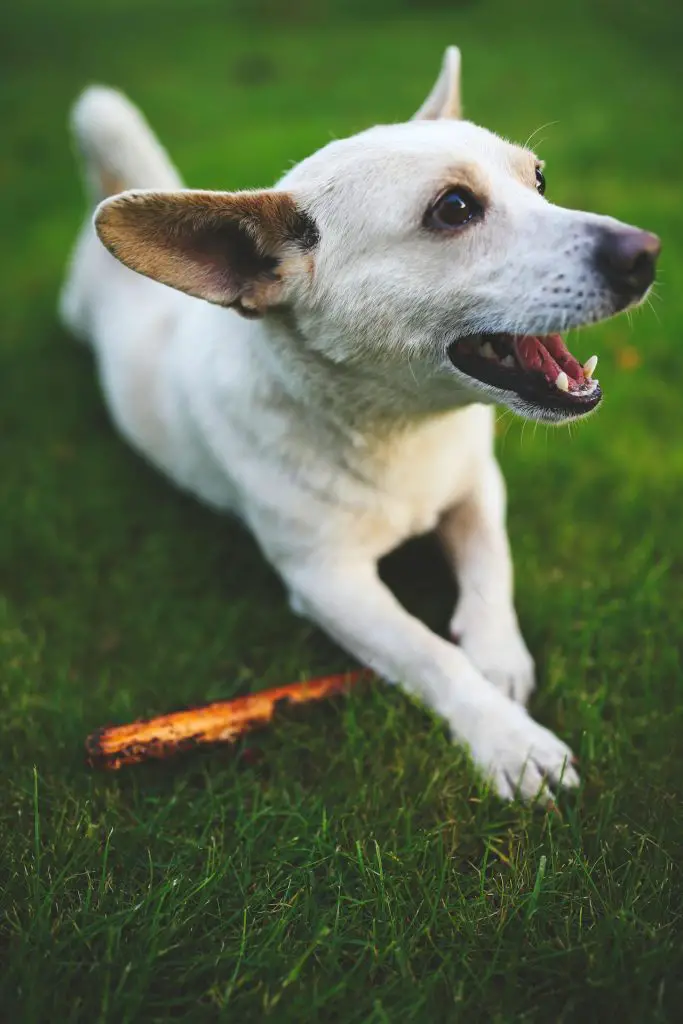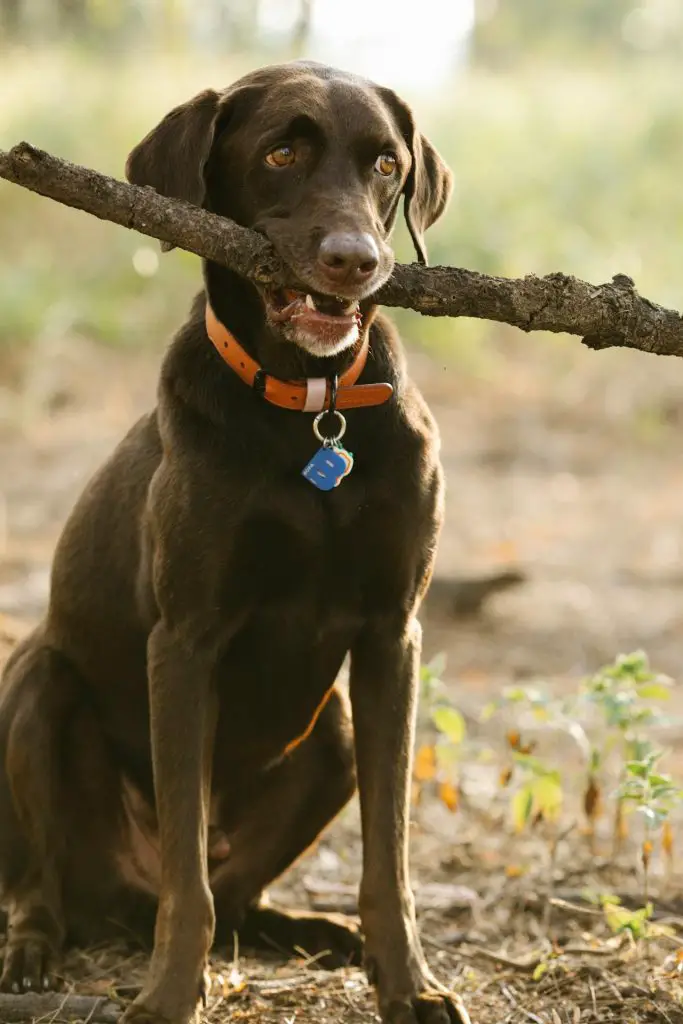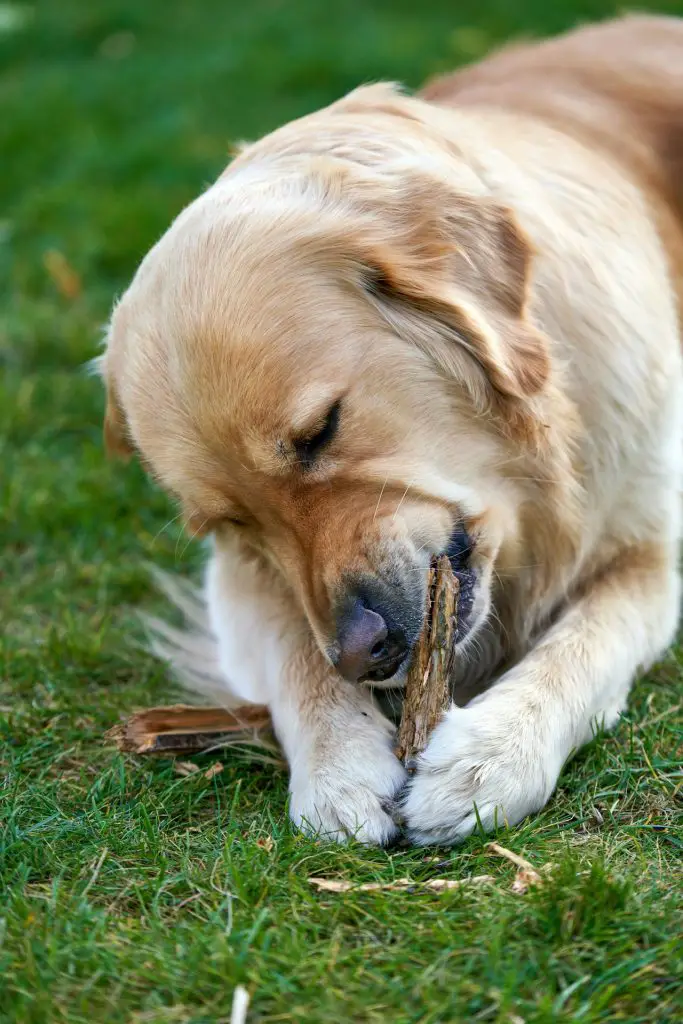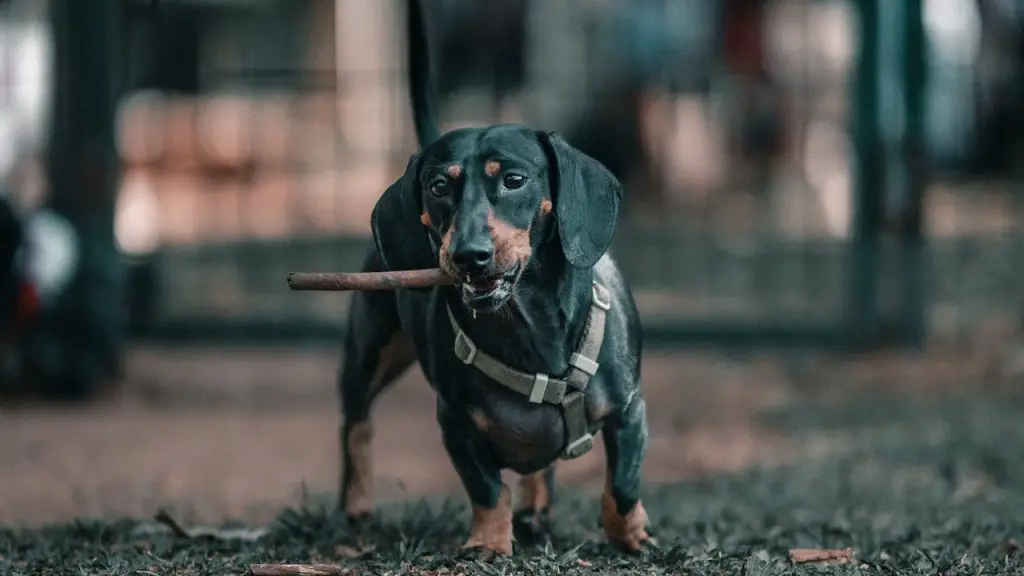
Your dog’s stick-eating habit can be attributed to several factors. Natural instincts drive foraging and chewing behaviors, while boredom or attention-seeking may exacerbate this tendency. Nutritional deficiencies, teething discomfort, or dental issues could also be culprits. In some cases, pica syndrome or stress and anxiety might lead to this behavior. It’s essential to understand that consuming sticks poses health risks, including choking and intestinal blockages. To address this issue, you’ll need to take into account your dog’s overall well-being, environment, and potential underlying causes. By exploring these factors, you’ll gain insights into effectively managing and preventing your dog’s stick-eating behavior.
Table of Contents
Key Takeaways

- Natural instincts drive dogs to chew and explore their environment through foraging behaviors.
- Boredom and lack of mental stimulation can lead to stick-chewing as a coping mechanism.
- Nutritional deficiencies may cause dogs to seek additional nutrients by consuming sticks.
- Teething discomfort in puppies or dental issues in adult dogs can prompt stick-chewing.
Natural Instincts and Behavior

To understand why dogs eat sticks, you’ll need to explore their deeply rooted natural instincts and behaviors.
Dogs are descendants of wild canines, and their innate tendencies still influence their actions today. Canine foraging behavior, a key aspect of their ancestral survival strategy, plays a significant role in stick-eating habits.
In the wild, dogs’ ancestors would investigate and consume various objects in their environment as part of their natural exploration.
This behavior helped them discover potential food sources and learn about their surroundings. When your dog chews on sticks, they’re fundamentally engaging in this primal investigative behavior.
This post contains affiliate links. However all the information provided on this site are my own honest opinions. See more in Disclaimer.
Additionally, the act of chewing itself is deeply satisfying for dogs. It stimulates their jaws, releases endorphins, and can help alleviate boredom or anxiety.
Sticks, being readily available in many outdoor environments, become convenient targets for this instinctual chewing behavior.
It’s important to note that while stick-chewing is rooted in natural instincts, it can pose health risks. Splinters, choking hazards, and digestive issues are potential concerns.
As a responsible owner, you should provide safe alternatives to satisfy your dog’s chewing instincts while discouraging potentially harmful stick consumption.
Boredom and Attention-Seeking

Boredom and attention-seeking behaviors often drive dogs to chew on sticks, especially when they lack adequate mental and physical stimulation.
Your canine companion may resort to this behavior as a way to alleviate boredom or to capture your attention.
Dogs are intelligent and social animals that require regular engagement and activity to maintain their mental well-being.
When you don’t provide sufficient playtime activities or interactive toys, your dog may seek out alternative forms of entertainment, such as chewing on sticks.
This behavior can serve as a coping mechanism for understimulated dogs, offering them a way to expend energy and occupy their minds.
Additionally, your reaction to stick-chewing, whether positive or negative, may inadvertently reinforce the behavior as your dog perceives it as a successful method of gaining your attention.
To address this issue, it’s essential to increase your dog’s daily exercise and mental stimulation. Incorporate more structured playtime, interactive toys, and training sessions into your routine.
Nutritional Deficiencies
While less common than behavioral factors, nutritional deficiencies can sometimes drive dogs to eat sticks as a way to supplement their diet.
Certain minerals and nutrients that may be lacking in your dog’s food can lead to this behavior. Pica, the consumption of non-food items, can be a sign that your dog’s body is craving specific nutrients.
Here’s a table outlining potential nutritional deficiencies and their symptoms:
| Deficiency | Symptoms |
|---|---|
| Iron | Lethargy, pale gums |
| Zinc | Skin issues, poor coat |
| Vitamin B | Weakness, weight loss |
| Fiber | Digestive problems |
To address these issues, you’ll need to guarantee proper nutrient absorption and dietary balance. Consult your veterinarian to rule out underlying health conditions that might affect nutrient uptake.
They may recommend blood tests to identify specific deficiencies.
If nutritional deficiencies are confirmed, your vet might suggest dietary changes or supplements. It’s essential to address these issues promptly, as prolonged deficiencies can lead to more severe health problems.
Remember, a balanced diet tailored to your dog’s specific needs is key to preventing stick-eating behavior caused by nutritional factors.
Teething and Dental Issues
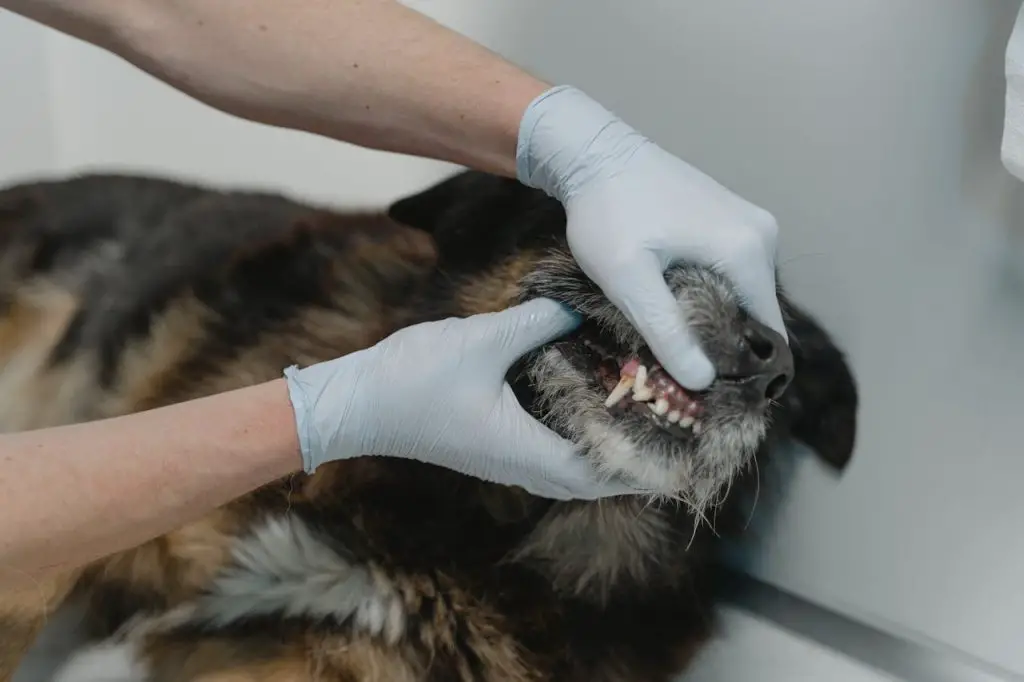
Chewing on sticks can often be attributed to teething discomfort or underlying dental issues in dogs, particularly in puppies and younger canines.
As your dog’s adult teeth emerge, they may experience pain and irritation in their gums, leading them to seek relief through chewing. Sticks provide a firm, textured surface that can help alleviate teething symptoms and soothe sore gums.
However, this behavior isn’t limited to puppies. Adult dogs may also turn to stick-chewing due to dental problems such as gum disease, tooth decay, or misaligned teeth.
If you notice excessive stick-chewing in your adult dog, it’s essential to have their teeth examined by a veterinarian to rule out any underlying issues.
To address this behavior, focus on maintaining your dog’s dental hygiene through regular brushing and professional cleanings.
Provide appropriate chew toys designed for dental health, which can satisfy their urge to chew while promoting good oral care. If teething is the cause, offer frozen toys or treats to numb their gums and provide relief.
Pica Syndrome in Dogs
Pica syndrome, a condition characterized by the persistent consumption of non-food items, can sometimes explain why dogs eat sticks.
This disorder can affect dogs of all ages and breeds, leading them to ingest various inedible objects, including sticks. Understanding pica causes is vital for effective management and treatment.
Several factors can contribute to pica syndrome in dogs:
- Nutritional deficiencies
- Psychological issues, such as anxiety or boredom
- Underlying medical conditions, like gastrointestinal disorders
If you suspect your dog has pica syndrome, it’s important to consult a veterinarian for a proper diagnosis. They’ll conduct a thorough examination and may recommend blood tests or imaging studies to rule out other health issues.
Pica treatment typically involves a multi-faceted approach. Your vet may suggest dietary changes to address potential nutritional imbalances or recommend behavioral modification techniques to reduce anxiety.
In some cases, environmental enrichment can help alleviate boredom-related pica. For dogs with underlying medical conditions, treating the primary issue often resolves pica symptoms.
Stress and Anxiety
If your dog exhibits stick-eating behavior, it may be a manifestation of stress or anxiety.
Recognizing signs of canine anxiety, such as excessive panting, pacing, or destructive behavior, can help you identify potential environmental stressors affecting your pet.
Addressing the underlying causes of stress, which may include changes in routine, lack of exercise, or insufficient mental stimulation, is essential for mitigating this behavior and promoting your dog’s overall well-being.
Signs of Canine Anxiety

Although stick-eating can be a normal behavior for some dogs, it may also indicate underlying anxiety or stress in your canine companion.
Understanding canine body language is vital in identifying signs of anxiety in your dog. Pay attention to subtle changes in their behavior and posture, as these can be indicative of heightened stress levels.
To help you recognize anxiety in your dog, look for the following signs:
- Excessive panting or drooling, even when not physically exerted
- Tucked tail, flattened ears, or a lowered body posture
- Increased vocalization, such as whining or barking
It’s essential to identify potential anxiety triggers in your dog’s environment. These may include loud noises, unfamiliar people or animals, or changes in routine.
Once you’ve recognized these triggers, you can work on managing your dog’s anxiety through behavior modification techniques and environmental adjustments.
If you notice persistent anxiety-related behaviors, including excessive stick-eating, it’s advisable to consult with a veterinarian or a certified animal behaviorist.
They can provide tailored strategies to address your dog’s specific needs and help alleviate their anxiety, potentially reducing the urge to consume sticks as a coping mechanism.
Environmental Stress Factors
Environmental factors frequently contribute to stress and anxiety in dogs, potentially leading to behaviors like stick-eating as a coping mechanism.
Your dog’s environment plays an essential role in their mental well-being, and sudden changes can trigger anxiety. Outdoor exposure, while generally beneficial, may introduce stressors that your pet finds challenging to manage.
Consider these common environmental stress factors:
| Indoor Stressors | Outdoor Stressors |
|---|---|
| Loud noises | Unfamiliar animals |
| New furniture | Construction noise |
| Visitors | Weather changes |
To mitigate these stressors, create a stable home environment and gradually introduce your dog to new outdoor experiences. Be aware of environmental changes that might affect your pet’s behavior.
For instance, construction work in your neighborhood or a new pet in the household can greatly impact your dog’s stress levels.
When you notice your dog exhibiting unusual behaviors like excessive stick-eating, assess recent environmental changes. Have you moved recently?
Has your work schedule changed? These factors could be contributing to your dog’s anxiety.
By identifying and addressing these environmental stress factors, you can help reduce your dog’s anxiety and potentially curb behaviors like stick-eating.
Addressing Underlying Causes
To effectively address your dog’s stick-eating behavior, you’ll need to tackle the underlying causes of stress and anxiety.
This approach involves a combination of environmental modifications, behavioral training, and potentially addressing any underlying medical conditions.
Consult with your veterinarian to rule out any health issues that might be contributing to this behavior.
Once medical causes are eliminated, focus on reducing your dog’s stress levels. Create a calming environment by:
- Establishing a consistent daily routine
- Providing a quiet, safe space for your dog
- Incorporating regular exercise and mental stimulation
Implement positive reinforcement techniques to discourage stick-eating and encourage appropriate chewing behaviors.
Offer alternative chew toys and praise your dog for choosing them over sticks. Consider enrolling in professional behavioral training sessions to address anxiety-related issues more thoroughly.
If the behavior persists, explore additional stress-reduction strategies such as pheromone diffusers, anxiety wraps, or, in severe cases, anti-anxiety medications prescribed by your veterinarian.
Remember that addressing the root causes of stress and anxiety is essential for long-term success in modifying your dog’s stick-eating behavior.
Risks and Prevention Strategies

Several significant risks are associated with dogs consuming sticks, and it’s crucial for pet owners to understand these dangers and implement effective prevention strategies.
Ingesting sticks can lead to choking, intestinal blockages, or injuries to the mouth, throat, and digestive tract. Sharp edges may cause lacerations, while splinters can become lodged in the gums or tongue.
In some cases, stick consumption can result in more severe complications requiring surgical intervention.
To guarantee stick safety, you should always supervise your dog during outdoor activities. Remove sticks from your yard and avoid areas with abundant fallen branches during walks.
Redirect your dog’s attention when they show interest in sticks, using positive reinforcement techniques.
Provide appropriate chew alternatives, such as durable rubber toys or specially designed dental chews, to satisfy their natural urge to gnaw. These alternatives not only offer a safer option but also contribute to dental health.
If your dog persistently seeks out sticks despite your efforts, consult with your veterinarian to rule out underlying health issues or nutritional deficiencies that may be driving this behavior.
Frequent Questions and Answers
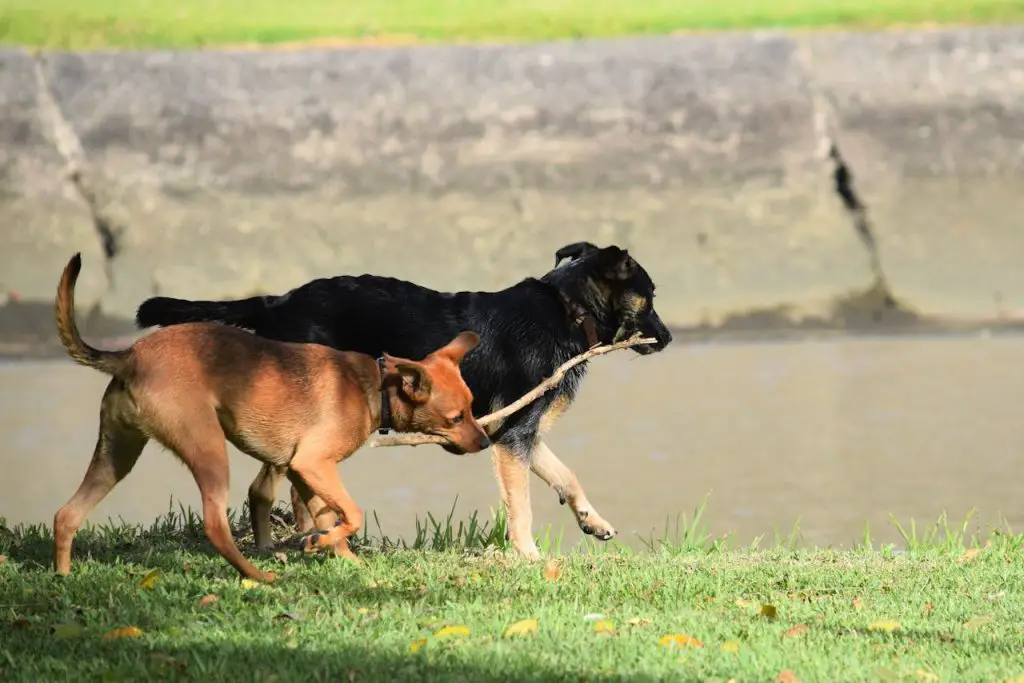
Yes, eating sticks can cause intestinal blockages in dogs. You should be aware that this behavior poses serious risks to your dog’s intestinal health. Stick ingestion can lead to digestive issues, obstructions, and potential surgical intervention.
Imagine your Labrador chewing on a pine branch. When it comes to stick safety, certain types are indeed more dangerous. Chemically treated wood, splintering hardwoods, and sticks with thorns pose higher risks for your dog’s health and digestive system.
To train your dog to stop eating sticks, employ positive reinforcement techniques. Offer alternative distractions like chew toys or interactive games. Consistently redirect their attention when they approach sticks, rewarding them for ignoring or dropping the objects.
While there’s no strong breed predisposition for stick-eating behavior, environmental factors play a significant role. You’ll find this habit across various breeds. It’s often linked to boredom, curiosity, or nutritional deficiencies rather than specific breed traits.
Yes, stick chewing can lead to splinters in your dog’s mouth or throat. These fragments can cause oral health issues, including injuries to the gums, palate, and esophagus. Immediate veterinary attention is essential if you suspect splinter-related complications.


